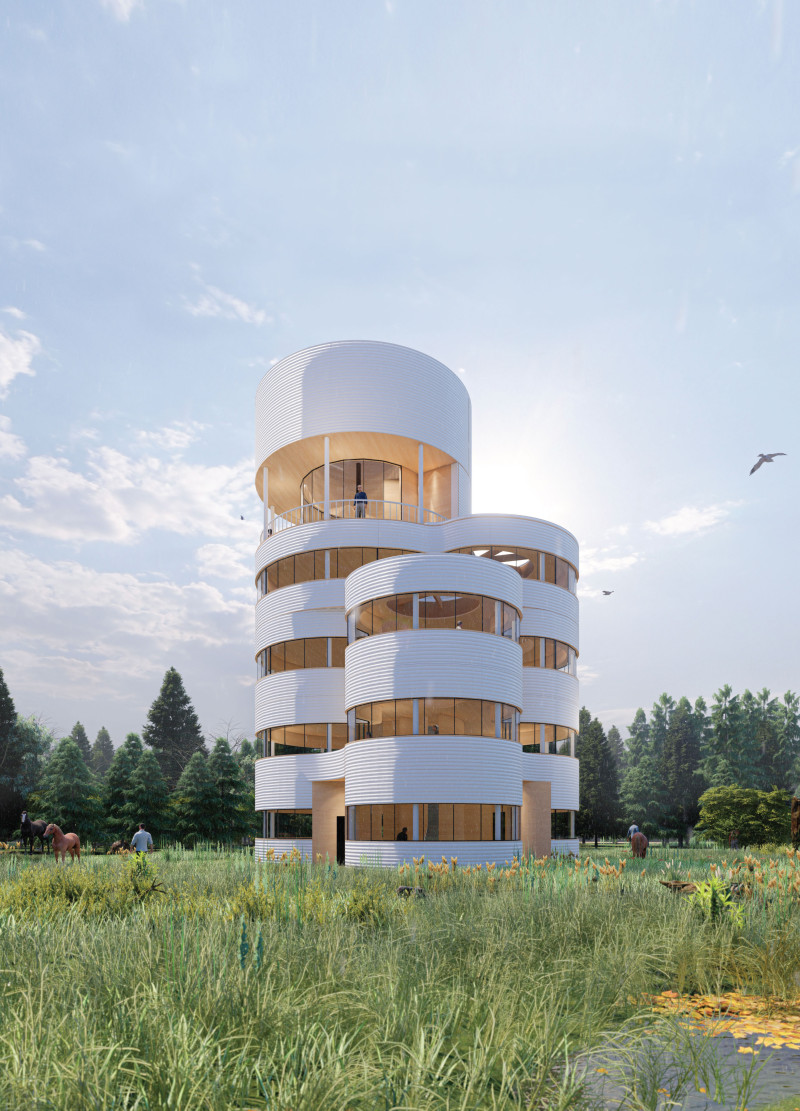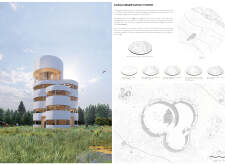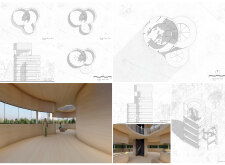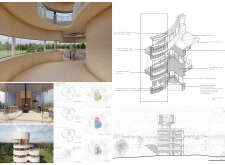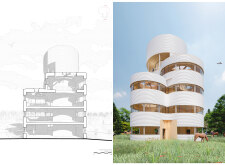5 key facts about this project
The project is primarily designed to serve [insert main function], aiming to accommodate the diverse needs of its users. A core aspect of this design is its ability to function effectively while fostering a sense of community interaction. The layout facilitates movement, ensuring that users can navigate the space easily, which enhances accessibility and flow throughout the building. This thoughtful planning reflects contemporary architectural trends that prioritize user experience alongside straightforward functionality.
A significant feature of the project is its materiality. The careful selection of materials, including [insert materials used such as concrete, glass, wood, etc.], underscores the commitment to sustainability and durability. Each material has been chosen not only for its structural properties but also for its ability to resonate with the local context. For instance, the use of [insert specific material] pays homage to traditional building techniques, while modern materials like [insert modern material] introduce contemporary accents that create a dialogue between the old and the new. This merging of materials adds layers of texture and character to the design, making it visually appealing and contextually relevant.
The architectural elements themselves are a testament to the careful consideration that has gone into the design process. The exterior facade showcases a harmonious arrangement of openings and surfaces, creating a dynamic interaction with natural light. Large windows allow for increased daylight penetration, while also offering views of the surrounding landscape, thus bridging the indoors and outdoors seamlessly. The building's silhouette adapts to the site’s topology, demonstrating sensitivity to its physical context in both height and massing.
Internally, the project is organized in a manner that promotes fluidity. Spaces are arranged to support various functions, allowing for flexibility in usage. This adaptability is crucial in contemporary architecture, as it prepares the building to respond to shifting community needs over time. The interior detailing, from materials to finishes, further emphasizes a cohesive design language that resonates with the overall architectural identity. Elements such as [insert specific interior features] illustrate how functionality can merge with aesthetic appeal.
The relationship between the building and its landscaped environment is another crucial aspect of the design. Carefully curated outdoor spaces not only enhance the building’s appeal but also provide opportunities for outdoor activities and relaxation. This integration of landscape design reflects a mindful approach to urban planning, creating an oasis amidst the bustling surroundings and inviting the community to engage with the space.
Throughout the design process, unique approaches have been employed to address the challenges presented by the site and its context. Innovative solutions, such as [insert innovative features], demonstrate the ability of architecture to solve practical problems creatively. This project exemplifies how contemporary architecture can respond to societal needs while being grounded in thoughtful design principles.
In exploring the presentation of this architectural project, interested individuals are encouraged to delve deeper into the elements that contribute to its distinctive character. Architectural plans, architectural sections, architectural designs, and architectural ideas all reveal how the project comes together as a cohesive whole. The interplay between form, function, and context invites further exploration, inviting discourse about its significance within its setting.


